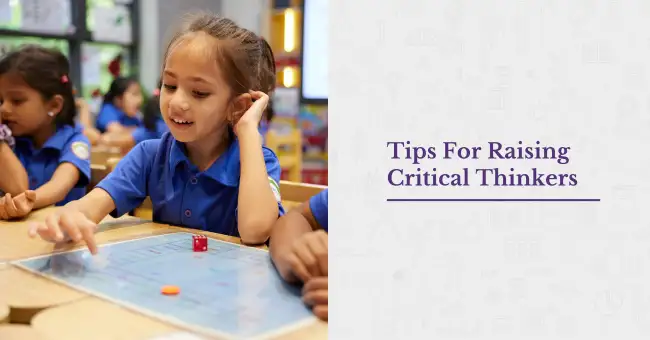
Six years ago, I started my journey as an educator by teaching early years in a non IB curriculum school. Since they had their own in-house curriculum with very regimented school planned lessons, I felt that I was restricted in my creativity and skills in the classroom as the set planners were to be followed word by word. I didn’t feel there was anything wrong in that but just felt it was different from my idea of being a leader for tomorrow’s future. I wanted to reassess my ideas of teaching and education and that’s when I decided to take a break from teaching. I almost thought I might have to change my career path as I didn’t enjoy teaching as much by the end of those three years. I looked up PYP (Primary Years Program), did my research, and applied to IB schools in my city. I was lucky enough to make it to an IB school. It’s been over two years now and I would say every single day is a new teaching and learning experience in the classroom.
My experience in my schooling years Unfortunately, while I was growing up and studying at school, the philosophy of an IB school was very alien and far from my own reality. I studied at a school that followed a traditional Indian curriculum and unfortunately for me, everybody was obsessed with high scores, especially in Grades 10 and 12. Children were judged by their scores, how you would do in life was determined by your scores and not by your skills. So if you wanted to get into a high paying or a blooming profession, all you needed was good scores. I for one was fortunately, or unfortunately, a moderate student. I never had exceptionally great scores, nor did I have very low scores. During those days the high scorers were more like the teacher’s favourites and were always given a lot of exposure and platforms to excel. They were encouraged to participate in curricular as well as co-curricular activities and were provided with any assistance that was required for them to excel. On the other end of the learning spectrum were students who were below par or who were academically weak. These learners were often provided with support in the form of time concessions during examinations, exemption from certain subjects and were also provided with extra remedial classes.
Now, here I was, an average student, stuck in between students who were either extremely brilliant in academics and co-curricular activities, and those who were academically weak. The only common thing between both these categories of students was that both had the required support and encouragement from their teachers. If it’s right to say, we were the neglected lot, nobody provided any support or encouragement to us. We were never pushed to participate in any extracurricular activities.
Why is it important to access moderate learners? More often than not, moderate learners feel an inferiority complex when they are compared to the gifted or the extremely brilliant category of learners. As much as it is important to understand the emotional needs of learners with special needs, it is equally important to understand such needs of these learners. There are times when a learner might want to be pulled out of the classroom in a resource room to have an IEP (individualized education plan) for him or her, or might just be craving for some personal attention from the teacher. There could also be times when the learner wants to do something rather challenging and meaningful so that they could treat that rare task as a form of reward. (Tabor, 2009)
Strategies for accessing all learners Even today, you will come across all sorts of learners in your classroom. It is the duty of an educator to cater to the various individual needs of every learner. There should be modifications and accommodations made to the current teaching and learning styles in order to address the needs of all the learners.
Differentiated work- A strategy that I often use in my classroom is having differentiated task sheets for all categories of learners. For instance, if I am teaching 2 digit addition without regrouping to second graders, for the below par students I would still keep task sheets with single digit numbers, for the moderate students I would keep task sheets with 2 digit addition but without regrouping, and for the above average or accelerated group I would consider keeping task sheets that have 2 digit addition sums but with regrouping. I would do so because I want everyone to feel comfortable at their own pace and not feel overwhelmed by the speed of the overall class. At no point should any student feel they are unable to catch up with others, because comparison has no place in my classroom.
Flexible grouping arrangements- Another way to normalize this in the class is by having flexible grouping arrangements for learners who have diverse learning needs, this really helps the learners to collaborate and support each other in many ways. A moderate learner might get to mentor a learner who is academically weak. This will boost his or her morale and also help build leadership skills and having the feeling of responsibility for someone else’s success. A flexible seating approach in which learners can choose whom they want to sit with, also helps, letting the students take ownership of their choices and giving them the power of making decisions for themselves.
Creating short-term goals- Letting the child create short-term goals with minimal assistance will help the moderate learner become more independent and will also help make him or her more self aware. When a learner creates his or her own goal, they learn to chase them and once that goal has been achieved a sense of accomplishment is felt. This sense of achievement and accomplishment boosts the morale, confidence of the learner. It makes them realise their true potential that they can achieve any goal that they set their mind to.
Be open-minded- Lastly but not the least, I have realized that there is no one size fits all approach for catering to the various needs of all learners in a classroom. An educator has to be open-minded in trying new and different strategies in his or her classroom and find out something that works best in the interest of all learners.
Written by: Juhi Maheshwari
PYP Faculty
JBCN International School, Oshiwara
References
Tabor, G. (2009, December 08).
The Needs of the Average Learner.
Retrieved from https://glennatabor.com/2009/12/the-needs-of-the-average-learner/











